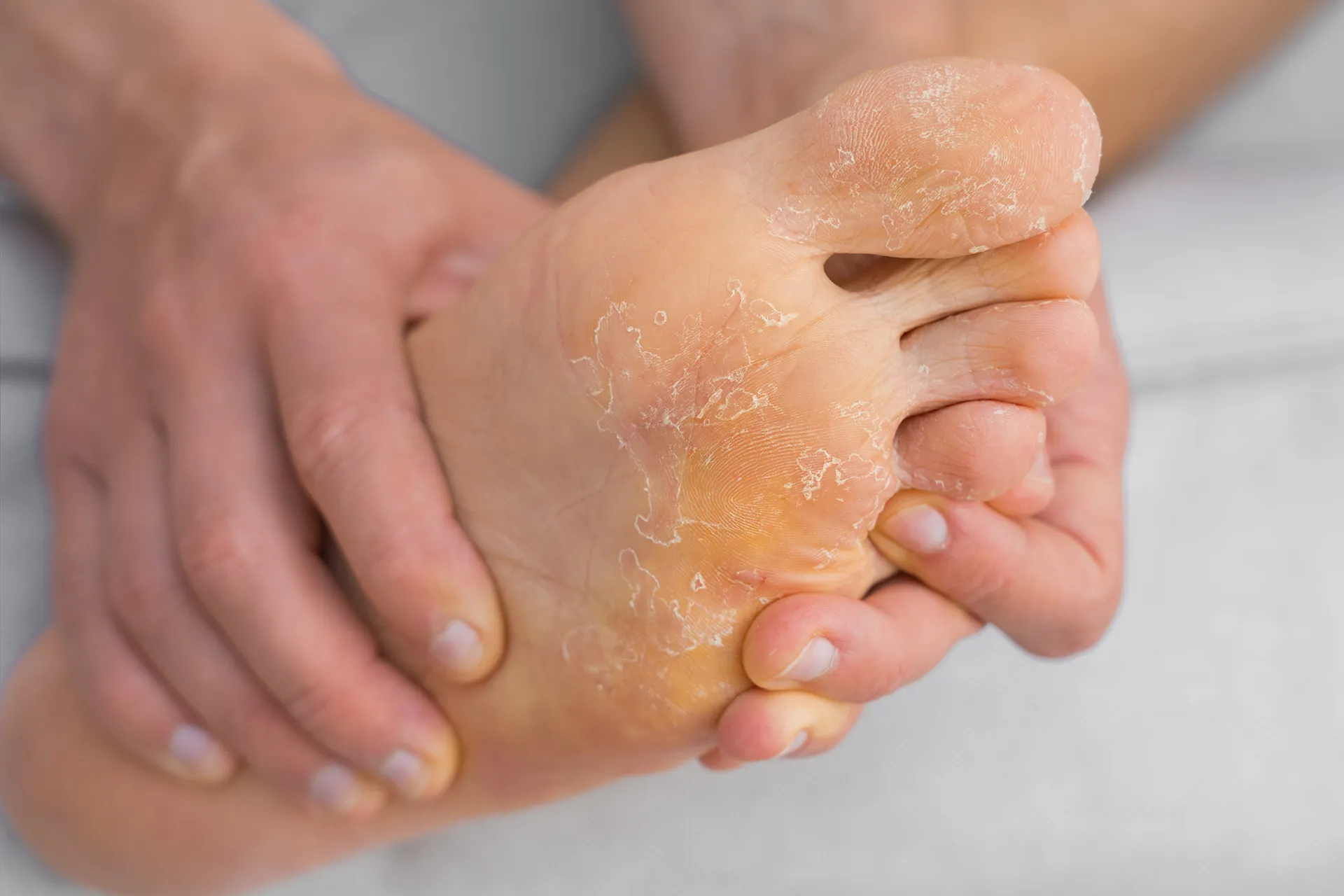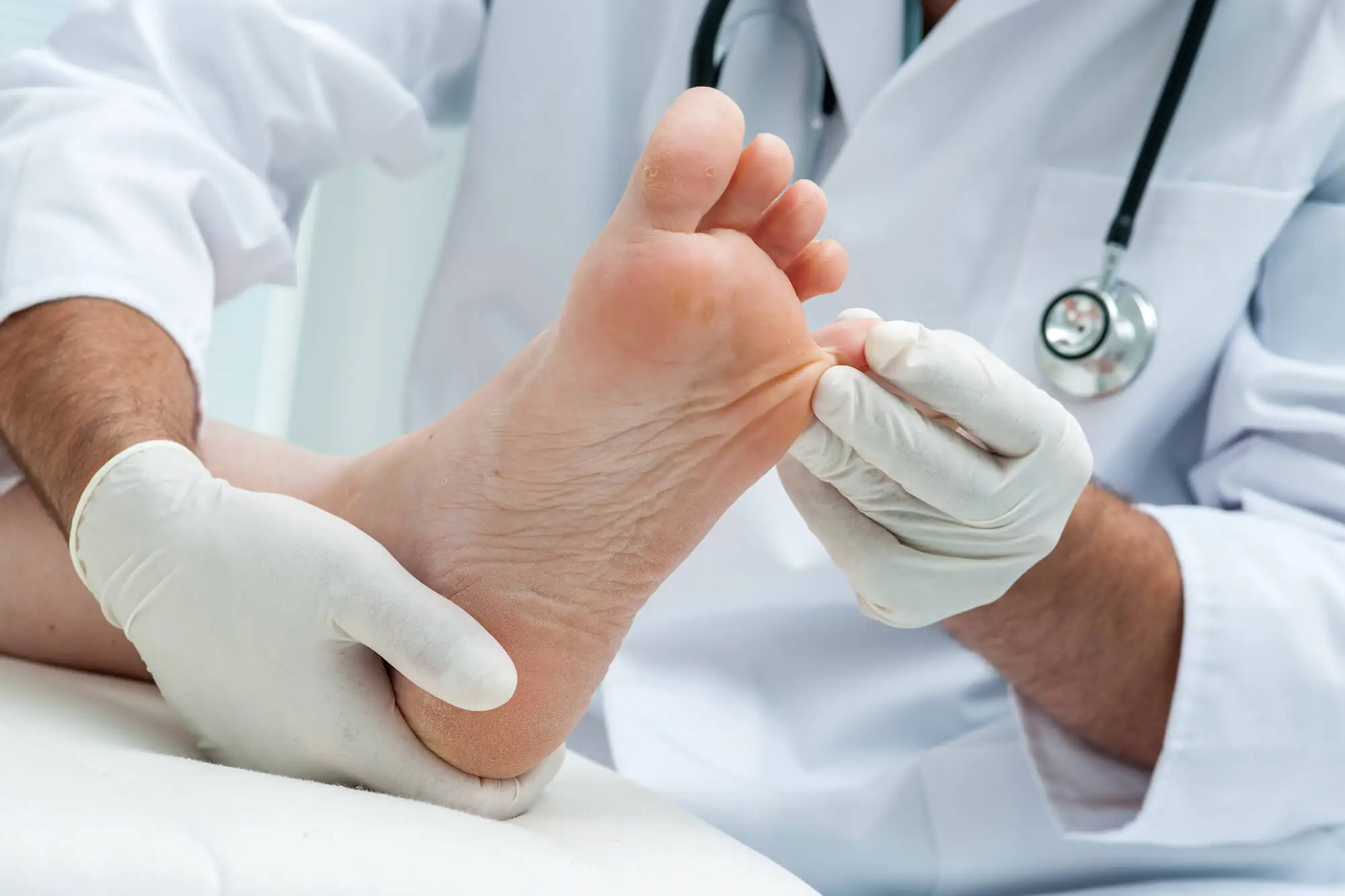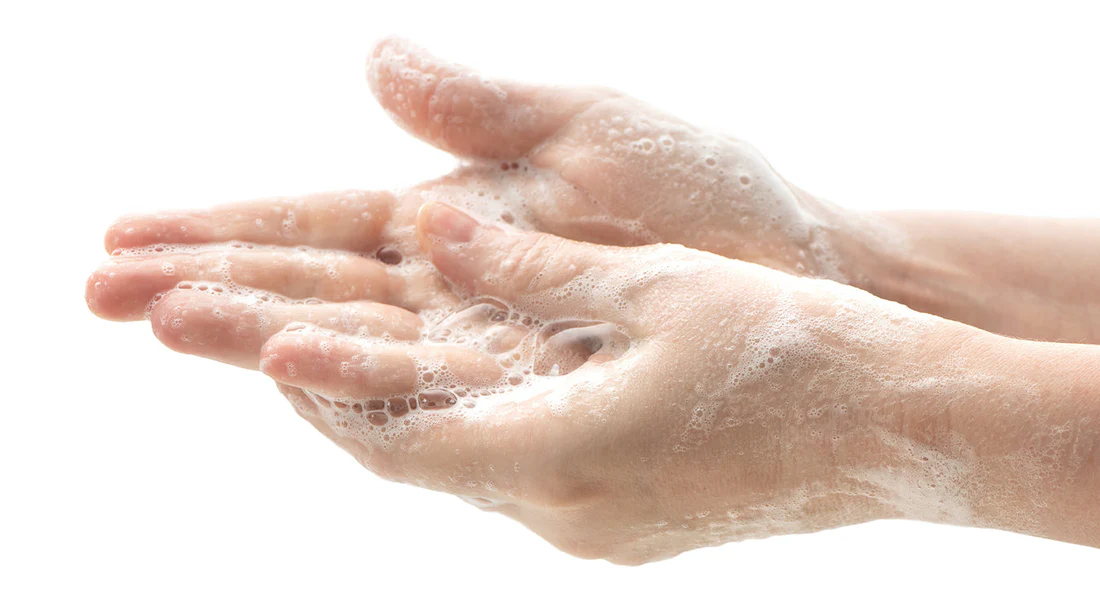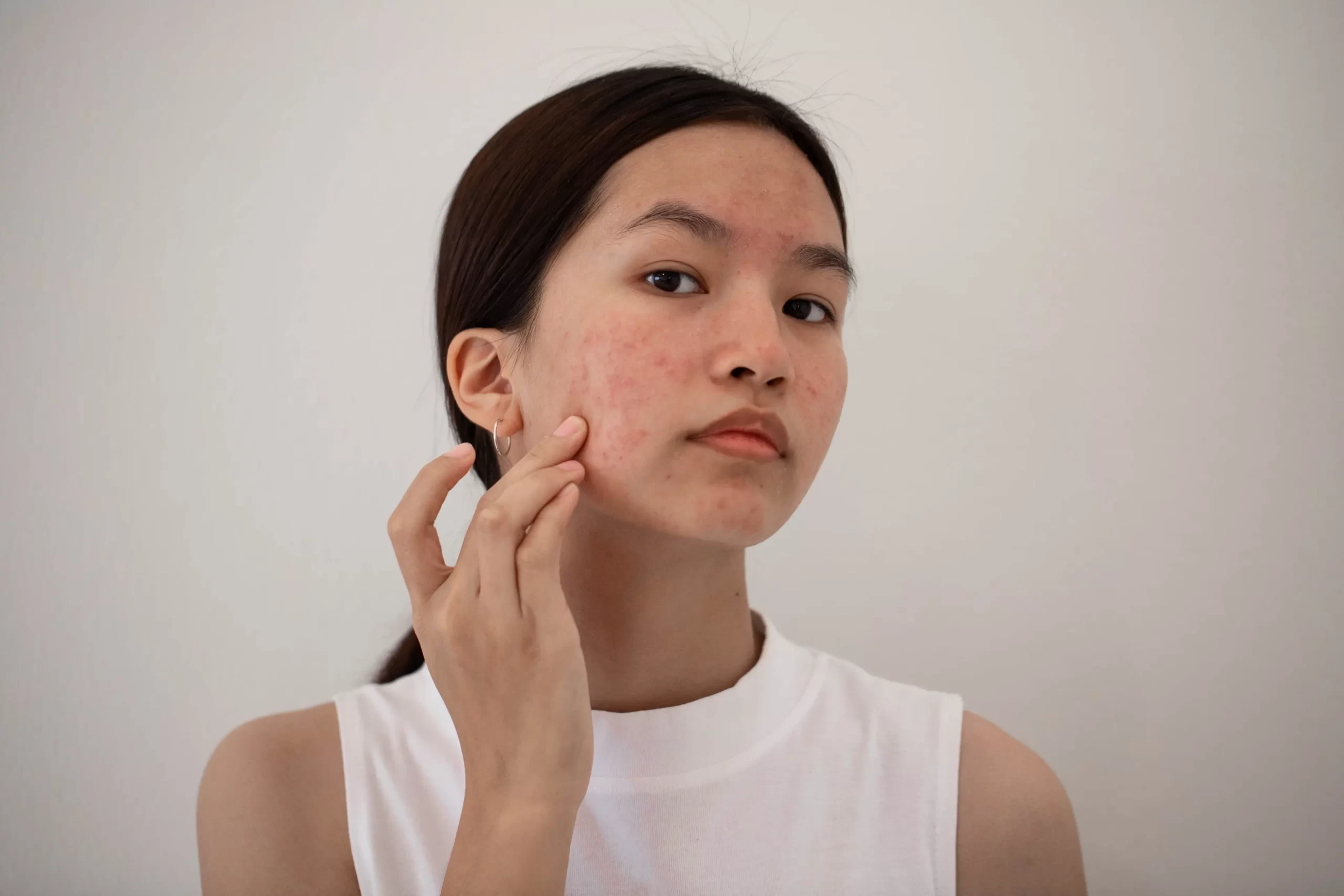Caring for your feet is more than just daily hygiene. Many people deal with skin diseases of the foot, from minor dryness to painful infections. As a foot dermatologist, Dr. Hannah Kopelman at DermOnDemand provides fast, personalized care for people needing expert help with foot skin problems and solutions.
While podiatrists treat foot structure and bone issues, a foot dermatologist focuses on the skin. This includes rashes, fungal infections, and cracked heels. Many people assume only a podiatrist can treat foot issues. But dermatologists are trained to treat skin conditions affecting the feet using prescription treatments. For recurring or stubborn symptoms, a dermatologist is often the most effective option.
Key Takeaways
- Foot dermatologists treat a wide range of skin conditions of the feet, including fungal infections, warts, and eczema, using prescription-grade solutions.
- Early signs of skin disorders on the bottom of the foot—like itching, cracking, or persistent dryness—should be evaluated to avoid complications.
- Home remedies can help with mild symptoms, but misdiagnosis or delayed care often worsens conditions that require dermatologist oversight.
- A daily foot care routine, wearing shoes that fit properly, and using dermatologist-recommended creams can help prevent common skin problems.
- DermOnDemand offers fast, online access to expert foot dermatology care, with personalized treatment plans delivered in about 24 hours.
Common Foot Skin Conditions
Athlete’s Foot and Fungal Infections
Athlete’s foot, also called tinea pedis, is one of the most common foot problems. It causes itching, flaking, and redness, usually between the toes. Places like locker rooms make it easier to catch because the fungus spreads in warm, wet spaces.
Other skin disorders on the bottom of the foot, like moccasin-type fungus, look like dry skin. Many people treat it as dryness, but it needs antifungal care. A foot dermatologist can diagnose and treat foot conditions early to stop them from spreading.
Warts, Corns, and Calluses
Plantar warts form on the bottom of the feet and are caused by a virus. They can hurt when you walk. Corns and calluses appear from pressure or rubbing, often due to poorly fitting shoes or tight socks and shoes.
If you see thick or hard skin on your big toe or soles of the feet, don’t ignore it. Trying to cut or file these at home can lead to cracked skin or infection. Professional care is safer and more effective.
Dry Skin, Eczema, and Cracks
Dry skin on the feet can crack and cause pain. Sometimes it leads to ingrown toenails or infections. In other cases, rashes may be caused by eczema or dermatitis. These skin conditions affecting the feet are often triggered by weather, allergies, or soaps.
Some patients have dyshidrotic eczema (blistering eczema) or onychomycosis (fungal nail infection). These look like dry skin but need special treatment. A board-certified dermatologist can help figure out what’s causing the problem and give you the right solution.
A strong daily foot care routine can prevent flare-ups. But if symptoms last or worsen, seeing a foot dermatology specialist is important.
When to See a Foot Dermatology Specialist
Not all skin problems on the feet will go away with home treatments. If you have deep cracks, frequent infections, or warts that don’t heal, it’s time to see a doctor.
At DermOnDemand, you can get a custom care plan from Dr. Hannah Kopelman or another board-certified dermatologist—no appointment needed.
See a dermatologist right away if you have:
- A rash or infection that spreads
- Bleeding or ongoing pain
- Skin that doesn’t improve after 1–2 weeks of OTC care
- A mole or spot that changes in size or color
Getting care early helps prevent blisters, stops infections, and speeds up healing.
Treatments for Foot Skin Conditions

Over-the-Counter Remedies for Common Skin Issues
Mild foot skin problems and solutions, like athlete’s foot or dryness, may respond to store-bought creams. Look for antifungals and urea-based moisturizers to soften and hydrate the skin.
But not all problems can be treated at home. Some over-the-counter products hide symptoms instead of fixing the real issue. For example, using lotion on a fungal infection may make it worse. A dermatologist can give an accurate diagnosis and the right treatment.
Prescription Treatments from Dermatologists
Some skin diseases of the foot need prescription-strength treatments. These include oral antifungals, medicated creams, or stronger exfoliants for thick calluses and corns.
Cracked skin caused by fungus or eczema may also need prescription creams. DermOnDemand makes it easy to access treatment—fast and discreet—without a visit to the office.
Foot Creams and Urea Treatments: What Works Best?
- Prescription vs. Over-the-Counter Options: Stronger creams are best for serious dryness and thick skin.
- 40% Urea Cream: Benefits and Safety: This high-strength option softens rough areas but should be used under medical guidance.
- Best Creams for Dryness, Odor, and Healing: Use a quality foot cream to prevent odor and blisters and keep your feet soft.
Preventing Foot Skin Problems
Daily Foot Care Routines for Healthy Skin
Keep your feet healthy by:
- Washing and drying them daily—especially between the toes
- Applying moisturizer to avoid cracked skin
- Cutting nails straight across to stop ingrown toenails
These simple steps help avoid many foot skin problems and solutions.
Footwear Choices and Hygiene Tips
Wear shoes that fit properly to avoid rubbing and pressure points. Switch out shoes often and wear clean, breathable socks and shoes. This lowers your risk of fungal infections of the skin.
Recommended Foot Creams for Prevention and Daily Care
Dermatologists often recommend urea foot creams to hydrate and protect the skin. These help stop new skin conditions affecting the feet before they start. Use them after your shower and let the skin fully absorb the cream.
Start Your Online Dermatology Plan Today
If you’re dealing with common foot problems, you don’t have to wait weeks to get care. DermOnDemand gives you fast access to Dr. Hannah Kopelman and other licensed experts. Your care is tailored to your needs—and fully online.
DermOnDemand makes it simple:
- No referral or insurance needed
- Complete a secure form in minutes
- Get your prescription and plan in ~24 hours
For busy people who want expert care without the wait, it’s the smarter way to take care of your feet.








